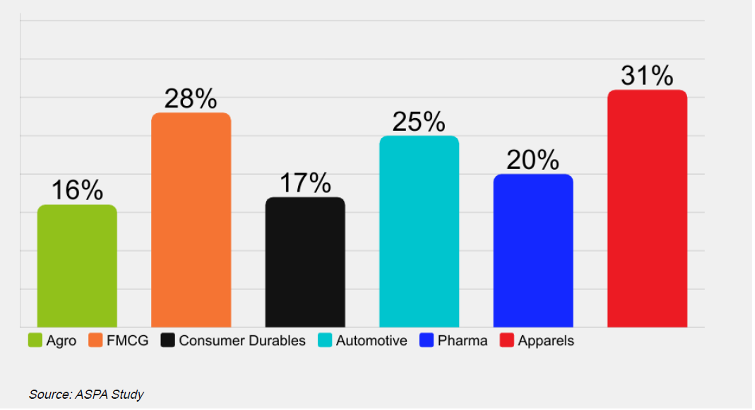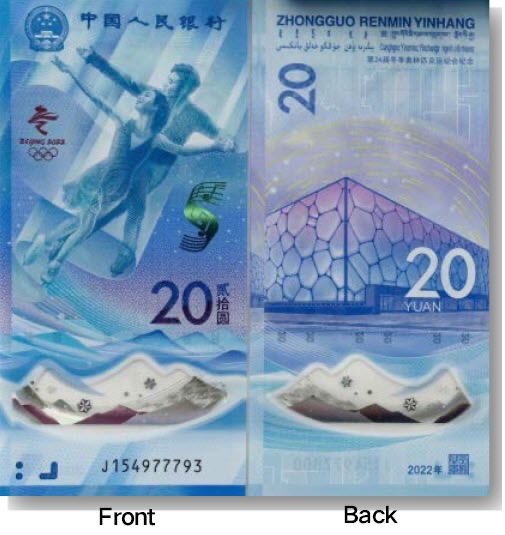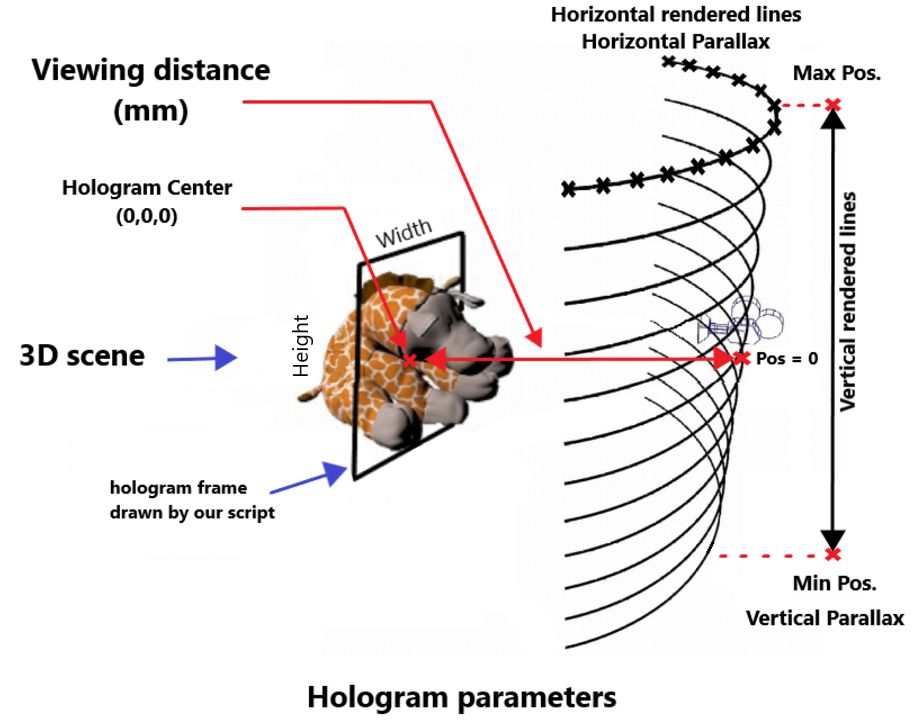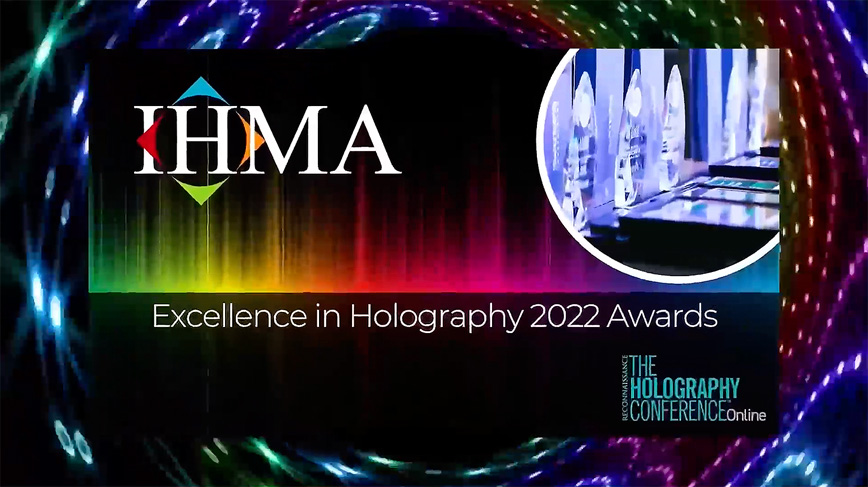2022 Review
For attendees only – password was provided by our event team.
The Holography Conference Online 2022
The Holography Conference has traditionally been a forum for hologram suppliers, producers and users to meet and exchange information and experiences. The event went online in 2020 and continues to be a place to share and showcase the latest technologies, production techniques and to discuss applications and markets. This year the event was sponsored by The Authentication Solution Providers’ Association (ASPA), nanofabrication systems provider Raith, Holography News® and The International Hologram Manufacturers Association (IHMA).
As in previous years, online attendees spanning several time-zones and continents converged on THCO to hear about the latest developments in the industry. The conference was divided into four thematic sessions to reflect the diversity of applications for holograms in document security, brand protection, art and packaging enhancement.
Holography – from Inception to Present Day
It seemed fitting, in this the 75th anniversary of the invention of holography as a concept, that the first session of the conference should be a retrospective of how far the technology, and the industry it has spawned, has come since Dennis Gabor filed patent BTH (GB685286) on the use of wavefront reconstruction to improve the resolution of electron microscopes.
In his paper ‘Holography – What’s in a Name?’, Paul Dunn (Chairman of the IHMA) started the conference by observing that today there are numerous 3D illusion technologies using the name ‘hologram’ and asked the question ‘but does this matter’?
Paul took the audience through the history of image forming technologies from early imaging techniques with a single lens camera through the advent of stereo viewers using two images of a subject from slightly different angles to the modern non-holographic methods of forming 3D images such as lenticular lens arrays, integral imaging and light field displays.
In conclusion, Paul felt that the use of the term ‘hologram’ is a personal view and his is that we should embrace these technologies and look to where we can learn from them.
Robert Renton, Optical Developments Director at OpSec Security (UK,) continued with the second presentation of the session with his paper ‘Optical Security Devices – an Enduring and Evolving Technology in Document Security and Brand Protection’.

Early stereo viewer
However, the game is changing, with origination equipment more readily available and counterfeits appearing more quickly than ever. Robert then took the audience through the ways that new technologies are being developed to control micro-fringe depth, shape and symmetry, generating new and novel effects not previously possible.

Blazed grating

Penetration of counterfeiting in India
For the way ahead, Chandra sees a combination of factors for ASPA to pursue in the fight against counterfeiting in India, which can be neatly summarised as: awareness, standardisation and collaboration.
The final presentation in the first session, from John Winchcombe of Reconnaissance International, took on the topical issue of ‘Sustainability in the Holography Industry’. Since spearheading the Sustainability Forum in Edinburgh (Scotland), John has become something of an expert in sustainability in the security print industry. His assessment of various holography companies’ efforts to implement effective strategies concluded with a clarion for help with the IHMA Sustainability Working Group, which he is setting up and will lead.
Protection and Prevention – High Security Features in Action
After a short break, session 2 took a journey around new developments in the use of holography to protect documents of value and authenticate products.
In his paper ‘The Enduring Relevance of Holograms as a Security Device’ Mark Deakes, Head of Technology Research at De La Rue Authentication, used the statistic that the market for fake goods was worth more than Ireland’s economy to illustrate the problem of illicit trade that has only accelerated since the rise of eCommerce during the pandemic.
He offered a solution that included layered brand protection, combining security (holograms) and digital solutions to create trust networks, reduce illicit trade and benefit end-consumers.
In an attempt to answer why holograms are so enduringly successful, he pointed to their inherent versatility across five vectors as described by De La Rue’s Chief Scientist Dr Brian Holmes: graphical versatility, variety of optically variable effects, application and product type, reflective and transmissive and finally, cost.
In conclusion, Mark made the point that secure holographic technology continues to innovate, evolve, adapt and develop new engaging innovative features that help to reduce the impact of illicit trade.
The second presentation came from Thomas Poreaux of IDEMIA (France) and was titled ‘Overcoming ID Document Fraud with a Revolutionary Approach of Holograms’. A bold claim indeed, but one that Thomas was able to substantiate.
Holograms are widely used to secure identity documents, and as the bearer’s photo is the most commonly attacked feature, holograms are placed on the corner of the primary portrait covering only a small part of the picture. Consequently, they do not guarantee protection against forgery. Additionally, few experts can really verify the authenticity of a hologram as sometimes the effects are too complex to interpret.
To overcome this, IDEMIA developed LASINK™ Helios – a polychromatic colour portrait integrated in a DOVID, protecting the secondary portrait. The feature combines colour personalisation with diffractive technologies, to effectively protect ID documents. For the secondary portrait, it strengthens security by preventing fraudsters from attempting alteration to the primary portrait.
The third presentation in the session: ‘Jump – a Design Concept’ from Christoph Gebauer of G+D Currency (Germany) looked at how through the integrated design of features, technical complexity and easy recognition can combine to give maximum security.
The JUMP concept has been developed with security ink supplier SICPA as a means of synchronising the visual effects of the technologies of both companies – diffractive and micro-mirror patches, threads and stripes from Louisenthal and SPARK® optically variable ink features from SICPA – into a holistic, attractive and ultimately intuitive designs for banknotes.
The fourth presentation from Natalie Vast of SURYS (France), titled ‘Moov™ Series: A dynamic and Unique Visual Experience for High-End Security’ explained how central banks and banknote designers are taking advantage of the range of attributes of the Moov technology – which combines (insert a brief description) to integrate visual features across a full series of banknotes.
Security and Beyond – New Technologies and Applications
Day two of the conference started with a session that explored the realms of holography outside of high security printing.
Anton Goncharsky from Computer Holography Centre , got the day off to a flying start with his paper ‘A New Holographic Principle –3D Zero Order Imaging’. He proposed a method to compute and synthesise a nano optical element to produce a 3D image that can be easily observed with white light illumination. The 3D image has full parallax when the optical element is tilted and even when it is rotated through 360 degrees. Additionally, unlike rainbow holograms, the colour of the 3D image does not depend on the viewing angle, so that the 3D image formed behaves like a real 3D object.

The presentation recounted the design and production of the two 2022 commemorative banknotes for the Beijing 24th Olympic Winter Games. Focusing on the security stripes, the paper described how the various optical effects (ColorTrace®, ColorDance®and Moire amplification) allowed the stripes to give shimmering vitality to the snow, lanterns and the Great Wall depicted on the notes.
Glenn Wood, from Fresnel Innovations, followed on with his paper on ‘Holographic Cold Foil – Expanding the Frontier for Wide Web Print Enhancement’. Glenn took the audience through the reasons why some powerful brands have rejected hot stamped holograms for high volume applications before introducing cold foil as a serious alternative.
The process is fast and can be applied inline with wide web offset printers but currently the only way to apply registered holographic images with cold foil is with narrow web flexo printing, aimed at the label industry.
The presentation went on to describe recent work conducted at Fresnel Innovations to create a holographic cold foil which incorporates print and metal in register with the holographic image.
The final paper in the third session came from Francis Tuffy, Editor of Holography News, who told the very personal story of working with Dr Ioana Pioaru, Prof David Brotherton-Ratcliffe (Geola) and Tal Stokes (De Montford, UK) to produce holographic sculptures of his daughters, which now hang in pride of place in his home.
Continuing Developments for a Brighter Future
The final session of the conference took into consideration a range of different topics that hinted at the prospects for the hologram industry.
Claudia was also keen to establish Envirofoil’s green credentials, with more than two-thirds of Hazen’s electrical power provided by the Holyoke Gas and Electric renewable hydro facilities and a further 7% of electrical energy used by the company coming from solar power.
There was a futuristic feel to Alan Hodgson’s paper ‘The Metaverse as a Business Driver’. Alan, who is a consultant in printing and imaging, examined the implications of the evolution of the metaverse from a perspective of holography and 3D displays.
To help do this, he defined the metaverse as a virtual space that looks and feels like a 3D graphical representation of the real world. While accepting that, at this point in time, we have to recognise that the concept is still developing he argued that large amounts of money are currently changing hands as companies vie for position – and that here is where the opportunities could lie for holography and the 3D imaging communities.
The final paper in the conference came from Phillipe Gentet from Hologram Forum with the title ‘CHIMERA™ – the Third Generation of Digital Holographic Printing System’.
The CHIMERA™ project is a joint venture between Ultimate Holography (Yves Gentet) in France, and Kwangwoon University (Seung-Hyun Lee, Philippe Gentet) in Korea to create the third generation of digital holographic printing systems. Paying tribute to the background to his research, Phillipe explained that in 1998 Zebra Imaging Inc. proposed the first commercial generation of large-format full-colour holographic printers and that the second generation was developed by Geola (Lithuania) and XYZ Imaging Inc. (Canada) and then later by Yves Gentet (Bordeaux, France).

How to create a CHIMERA
Phillipe brought the paper, and the conference, to a close by encouraging the participants to attend the 12th International Symposium on Display Holography (ISDH) in the Sofitel Ambassador Seoul, Korea, from 26 June to 1 July 2023.
The Holography Conference Online has now become an annual fixture, and the next one will be held in November or December 2023.
Attendees
3D AG
Switzerland
Acviss Technologies
India
Alan Hodgson Consulting Ltd
United Kingdom
All4Labels Smart + Secure GmbH
Germany
Atech – Starr
USA
Authentication Solution Providers Association (ASPA)
India
Banco do Brasil
Brazil
Bundeskriminalamt Germany
Germany
Canada Border Services Agency
Canada
Centre for Development of Imaging Technology (C-DIT), Govt. of Kerala
India
China Banknote Printing and Minting Corporation
China
CJSC Holography Indus
Belarus
Computer Holography Centre Ltd
Russian Federation
Cosmo Films Ltd
India
Currency News
United Kingdom
Dai Nippon Printing
Japan
Danish National ID Centre
Denmark
De La Rue
United Kingdom
Demax Holograms
Bulgaria
DNP
Japan
DNP Imagingcomm Europe BV
Netherlands
FEDERATION TUNISIENNE DES ARTISANS ET DES PETITES ET MOYENNES ENTREPRISE
Tunisia
Fresnel Innovations Ltd
USA
Frontex
Poland
Galileo Innovations Pvt. Ltd.
India
Giesecke + Devrient
Germany
Guangzhou Banknote Printing Company
China
Hazen Paper Company
USA
Hi-Glo Holo Images Pvt Ltd
India
Holo 3D Srl
Italy
Holoflex Limited
India
Holographic Security Marking Systems P Limited
India
HOLOSAFE SECURITY LABELS PVT. LTD.
India
Holostik India Limited
India
HP India Sales Pvt Ltd
India
Hueck Folien
Austria
IDEMIA
France
IHMA
United Kingdom
IN Groupe
France
INCM
Portugal
ITW Specialty Films
USA
JCS RPC Krypten
Russian Federation
JETSCI Global
India
JPatton
USA
Kumbhat Holographics
India
Kurz India Private Limited
India
LEONHAR KURZ Stiftung & Co. KG
Germany
Louisenthal
Germany
Maan Machine Tools
India
Madras Security Printers Private Limited
India
Manufacturing
United Kingdom
Mitsubishi Polyester Film GmbH
Germany
Monotech systems Ltd.
India
NASPS
Egypt
National Bank of Belgium
Belgium
NovaVision
USA
OpSec Security Group
United Kingdom
Optaglio a.s.
Czech Republic
OVD Kinegram AG
Switzerland
Papierfabrik Louisenthal GmbH
Germany
Police Presidium of the Czech Republic
Czech Republic
Polish Security Printing Works Inc.
Poland
Process Color (P) Ltd
India
PRS Permacel Private Limited
India
PT. Pura Barutama
Indonesia
R.B.H conditionnement
Tunisia
Rainbow Holographixs Private Limited
India
Raith
Germany
Vinsak India Pvt. Ltd.
India
XRD Nano Limited
United Kingdom
Zhongchao Special Security Technology Co., Ltd
China
For attendees only – password was provided by our event team.
Monday 5 December 2022
Session 1 – Holography – from Inception to Present Day
11:00
Conference Welcome
11:25
Optical Security Devices – an Enduring and Evolving Technology in Document Security and Brand Protection
Robert Renton
OpSec Security (UK)
11:45
Recent Trends and Developments in Holographic and Security packaging in India
Chander Shekhar Jeena
Authentication Solution Providers’ Association
15 minutes for Q&A
12:40 – Break – Awards Intro and Submissions
Session 2 – Protection and Prevention – High Security Features in Action
14:00
Overcoming ID Document Fraud With a Revolutionary Approach of Holograms
Thomas Poreaux
IDEMIA (France)
14:40
Moov Series: A dynamic and unique visual experience for high-end security
Nathalie Vast
Surys (France)
15 minutes for Q&A
15:15 Wrap-Up Day 1
Tuesday 6 December 2022
Session 3 – Security and Beyond – New Techniques and Applications
11:00
Conference Welcome
11:05
A New Holographic Principle – 3D Zero Order Imaging
Anton Goncharsky
Computer Holography Centre (Russia)
11:25
Security Stripes of Beijing Winter Olympics Commemorative Banknotes
Xinyi Li
ZSST - a company of China Banknote Printing and Minting Corporation (China)
11:45
Holographic Cold Foil – Expanding the Frontier for Wide Web Print Enhancement
Glenn Wood
Fresnel Innovations Ltd
12:05
Holographic Sculptures – a New Dimension in Holographic Imagery
Francis Tuffy
Reconnaissance International (UK)
15 minutes for Q&A
12:40 – Break – Awards Intro and Submissions
Session 4 – Continuing Development for a Brighter Future
13:40
Automated verification of optically variable security features as a matter of collaboration
Dmitrijs Bobrovs
Regula Forensics Inc. (USA)
14:20
CHIMERA™ – a Third Generation of Digital Holographic Printing System
Philippe Gentet
Hologram Forum
15 minutes for Q&A
14:55 Awards Ceremony
15:05 Conference Closing
2022 Winners Reflect Holography’s Ongoing Success and Growth
This year’s Excellence in Holography awards, organised by industry trade body International Hologram Manufacturers Association (IHMA), continue to reflect an expanding industry that sees commercial innovation and creativity at the heart of future growth and development.
The judges were impressed by the fusion of traditional hologram concepts with other technologies across a crop of high-quality category winners, which included:
Best Origination – IQS Structures for its commemorative presentation and technology innovation hologram IQ Singularity
Innovation in Holographic Technology – KURZ for its Aerospace house note 2022 series, and the Balloon 50 denomination
Best Applied Security Product – IDEMIA’s LASINK Helios technology for ID document holograms, and Louisenthal for its a new 5,000 kwacha banknote hologram in collaboration with the Reserve Bank of Malawi
People’s Choice – Computer Holography Centre for its 3D Zero Order Imaging.
The Excellence in Holography awards recognise outstanding achievement, marking success for suppliers, manufacturers and end-users at the forefront of the sector who have brought forward innovative or commercially viable hologram products or techniques over the last 12 months.
This year’s event comes as the IHMA continues to develop its role as the leading voice for those involved in global commercial holography.
Chair of the IHMA, Dr Paul Dunn, commended the standard of entries as being of the highest quality, representing an innovative industry at the forefront of the fight against counterfeiting.
In congratulating all the winners, he said: ‘These awards mark ongoing advancement in the design, development and technology of commercial holograms, which continue to find fresh and innovative ways to add value and heightened levels of security to products used by millions of consumers the world over.’





















